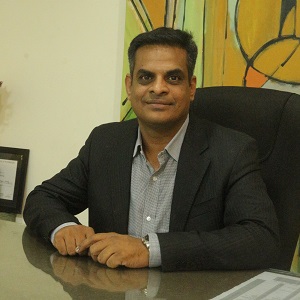Emerging Trends Revolutionizing Architecture Education in India
 Ar. Kathiravan P is a highly experienced academician and a professional with more than two decades of experience in the Architecture field. Before entering the education sector as the Dean of the Faculty of Architecture, Design and Planning, Karpagam Academy of Higher Education in 2014, he was a visiting faculty at SRM, Chennai, and later to KAHE, Coimbatore. He founded his company, SK Associates in 2011 and has experience in large-scale projects. Asia’s largest Insect Museum at Tamil Nadu Agriculture University, Coimbatore is one of his milestone projects amongst the gated communities, residences, office spaces, and commercials he has worked with.
Ar. Kathiravan P is a highly experienced academician and a professional with more than two decades of experience in the Architecture field. Before entering the education sector as the Dean of the Faculty of Architecture, Design and Planning, Karpagam Academy of Higher Education in 2014, he was a visiting faculty at SRM, Chennai, and later to KAHE, Coimbatore. He founded his company, SK Associates in 2011 and has experience in large-scale projects. Asia’s largest Insect Museum at Tamil Nadu Agriculture University, Coimbatore is one of his milestone projects amongst the gated communities, residences, office spaces, and commercials he has worked with.
Due to the present rate of rapid globalization, there is an immediate need for systematically designed smart urban townships across the country says Ar. Kathir. However, there is a severe shortage of skilled architects and planners according to the recent report by the NITI Aayog. It states that India will need at least 1,00,000 planners to develop and guide the needed urban infrastructure. This is becoming an even more serious issue since a majority of the architects available today; prefer working for private organizations over government agencies. Developing infrastructure across all states is paramount to the overall growth and development of the nation, the central government is offering benefits and incentives to the state governments for the appointment of urban planners and architects with the sole purpose of developing infrastructure across their respective regions.
Latest Tech Advancements in Architecture Space
“Recent developments in technology have changed the way the construction industry works," says Ar. Kathir. He also addressed, “Unlike the initial phase of my career where we used boards or sheets to draw building plans manually and gave them to clients, the last two decades have witnessed a lot of technological advancements happening within the architectural segment. Today, 3D technologies enable architects to provide a vivid picture, using Augmented and Virtual Reality of buildings to their clients. Additionally, we have witnessed the emergence of a lot of software that enables architects to create 3D models of buildings in very short durations. Furthermore, this virtual experience of buildings even before commencing the construction process, saves a lot of time and resources in terms of building design”.
Additionally, educational institutions, colleges, and universities are now using the latest technology to provide students with much-needed business knowledge. Advances in design technologies such as AutoCAD and BIM allow students to better learn the design process, while AR/VR technology allows them to better understand the building process. The simulation technology also provides students a first-hand knowledge of the construction process with a better understanding of various safety measures, says Ar. Kathir.
Interdisciplinary approach to enhance Learning Outcomes
Architecture is a combination of technology and art. In the early 19th century, there were no colleges or universities offering architecture education courses worldwide; only a few institutions offered civil engineering courses that covered the technical aspects. Later, academic institutions in Western countries introduced the concept of integrating craftsmanship and technical aspects into a single course, thus initiating architecture courses. Today, architecture encompasses numerous interdisciplinary aspects such as technicalities, interior design, and a few more. Therefore, architecture education not only provides students with the necessary technical knowledge to construct buildings but also instills an aesthetic sense, says Ar. Kathir. He believes, the interdisciplinary approach immensely enhances educator’s teaching methods for architecture students.

